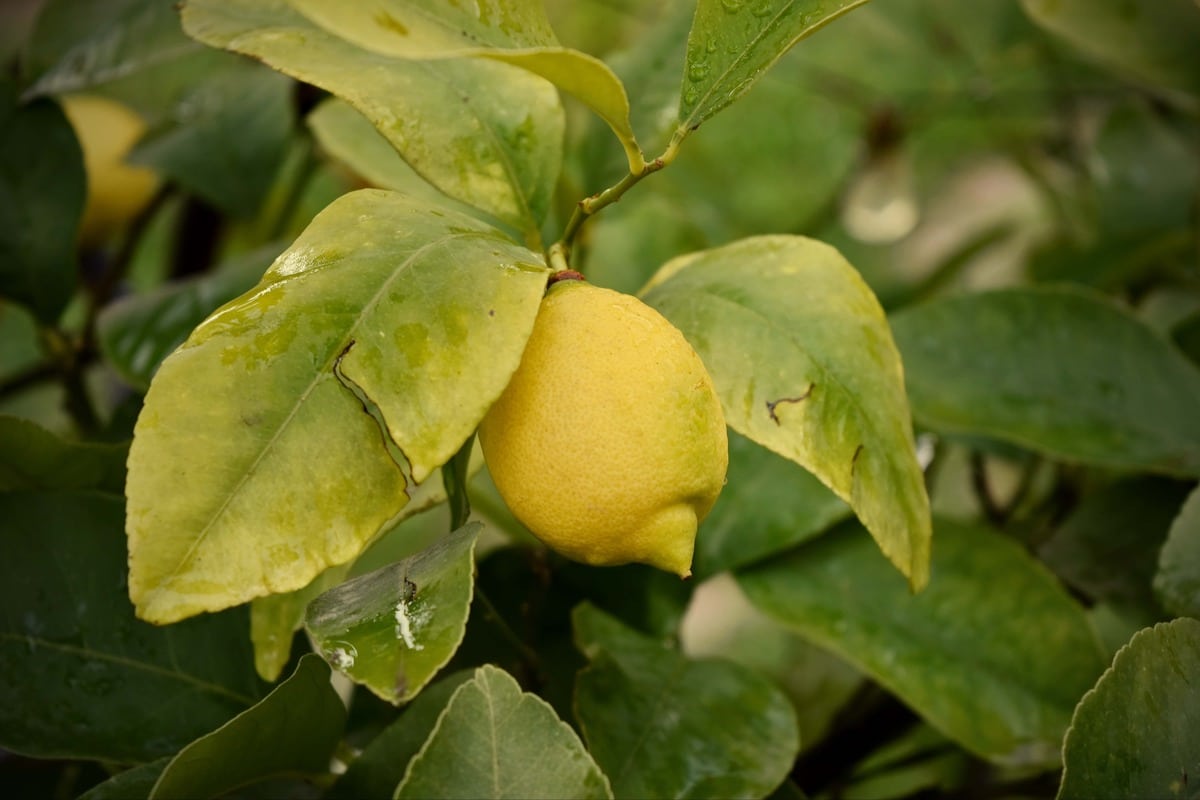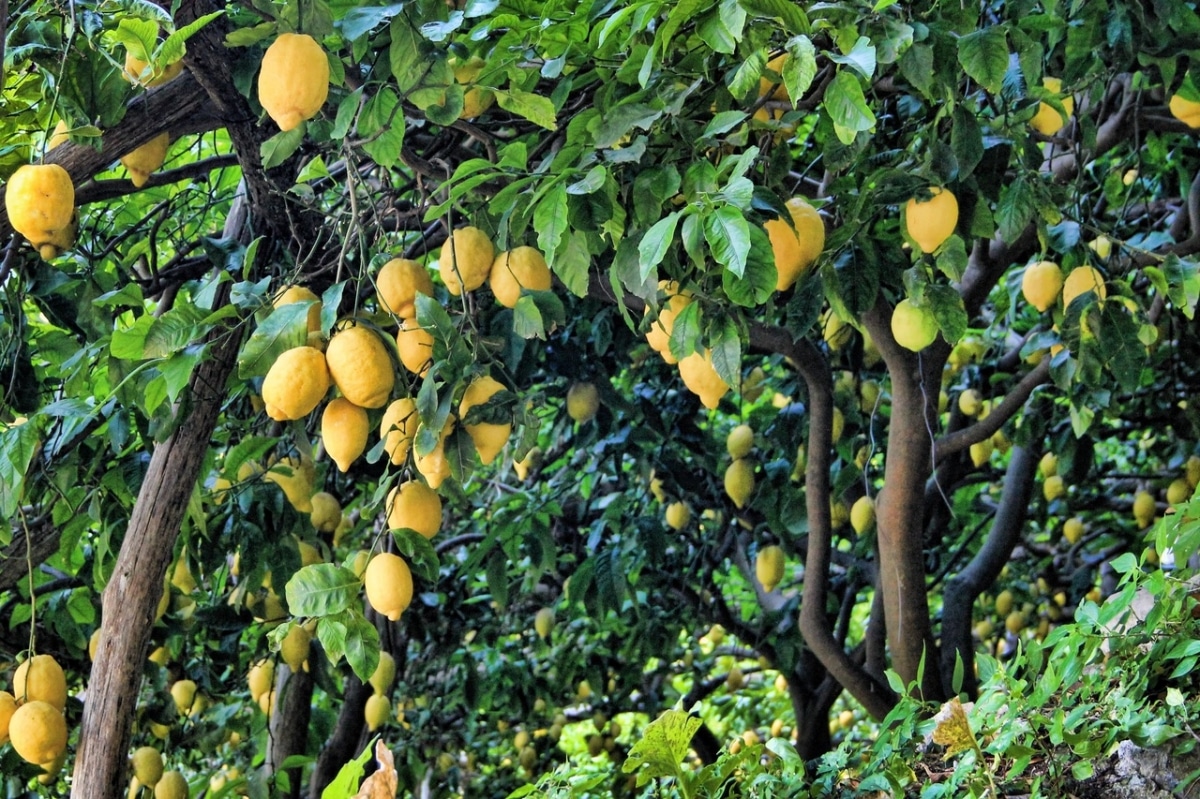
The lemon tree is an evergreen fruit tree that has many qualities: it is very productive from a young age, it can be grown in a pot since it resists pruning, and it smells wonderful. Its care is not very complicated, but If there is something that drives those of us who have a specimen crazy, it is the yellowing of its leaves.
Why is it like this? And the most important, How can we recover a lemon tree with yellow leaves? Since this is a very common problem, it is important that we know what measures to take in case our beloved tree gets like this.
Why do the leaves of the lemon tree turn yellow?

El lemon Tree, whose scientific name is Citrus x lemon, is a perennial fruit tree that grows over 5-7 meters high. Of all the most widely grown citrus fruits, this is one of the largest. But its height should not worry us too much, since as we said before, it can be pruned so that it does not grow so much.
But apart from pruning it, we have to know what its basic needs are so that its leaves do not turn yellow. And it is that many times they become like this due to an error in the cultivation. Next I will tell you what are the reasons why the tree stops looking green:
- Lack of nutrients (iron or manganese)
- Lack or excess of water
- Poor root aeration
- Pests, such as mealybugs
What to do to recover it?
The first thing to always do in these cases is to identify the cause. So let's talk more about the causes, explaining everything you need to know about them:
Lack of nutrients (iron or manganese)
The lemon tree is a tree that we could consider as an acidophilic plant, that is, it lives in acid soils. It does not need a pH as low as azaleas for example, but when grown in soils with a pH of 7 or higher, that is, in alkaline or clay soils, the leaves turn yellow rapidly. That does not mean that it cannot be kept there, because it can be, but only if measures are taken.
Now, how do you know that it lacks nutrients? Identifying the symptoms:
- Iron deficiency: the leaves turn yellow but keep the nerves green. The problem begins in the youngest, and little by little it reaches the rest.
- Manganese: the leaves turn yellowish, from the edge inwards.
To do? Raise the pH of the soil, of course. But how? To do this, we recommend fertilizing it with a specific fertilizer for citrus fruits, such as this. It is urgent that it produce green leaves so that it does not weaken further, so we need a product that is effective quickly.
From here on, we must continue to fertilize it, this time with an ecological fertilizer, such as this of Cultivars for example. We will always follow the instructions for use, so our lemon tree will not lack anything.
Lack or excess of water

It is important to water the lemon tree, since otherwise its leaves will turn yellow and end up falling. But you have to keep in mind how bad it is to water a little, as it is to water a lot. Both excess and lack of irrigation can cause problems, why? For this:
- Lack of water: Dehydration causes new leaves to turn yellow and then brown until they fall off. This weakens the plant and attracts pests like mealybugs.
- Excess of water: when the roots are drowned, the leaves that turn yellow first are the lower ones. And if the root system is running out of air, it cannot perform its functions. Pathogenic fungi will appear, and the lemon tree could lose its life.
To do? Okay, in the first case, we will water. You have to pour plenty of water on it so that it hydrates as soon as possible. If it is in a pot, we will take it and put a plate under it full of water until about 30 minutes have passed. Then we'll drain it.
On the other hand, if we are watering too much, we will temporarily suspend irrigation and treat it with polyvalent fungicide, as No products found.; in this way we will reduce the risk of fungi causing significant damage. If we always have it in a pot without drainage holes, or with a plate underneath, we must plant it in one that does have holes in the base, or drain the plate as the case may be.
Poor root aeration
The lemon tree It should be planted in land that absorbs water quickly, since its roots do not resist waterlogging.. For this reason, if we plant it in heavy and/or compact soils, it will begin to have the same symptoms as if we were watering it frequently; that is, its leaves will turn yellow and fall.
For this reason, if they are in such a land, it is best to extract it, and improve the soil, mixing it with a specific cultivation substrate for citrus fruits such as this. If it is in a pot, it will be easier: we will take it out and change the substrate, without manipulating its roots; we just have to remove the one that is loose.
Pests
If your lemon tree is apparently fine, but suddenly begins to have yellow leaves, it may have some plague. The ones that affect you the most are:
- Red spider: they are tiny insects, measuring 0,5 centimeters or less, which we will find mainly on the underside of the leaves.
- Mealybugs: they are insects that can look like cotton balls -such as the cottony mealybug- or limpets -such as the San José louse-, but in any case they feed on the sap of the leaves, turning them yellow.
- lemon miner: it is a lepidoptera that feeds on the tender leaves, causing whitish stripes or lines to appear on them.
- Aphids: they are very small insects, measuring about 0,5 centimeters, green, black, orange. They also feed on the leaves, specifically their cells, which weakens the lemon tree.
To do? There are several organic products that will work against these pests. For example, yellow sticky traps will help us control and eliminate aphids and leaf miners; and diatomaceous earth is a very useful natural insecticide against mealybugs and spider mites (and other pests, such as whiteflies). You can get the first here, and the second by clicking on this link.
We hope your lemon tree recovers soon.











